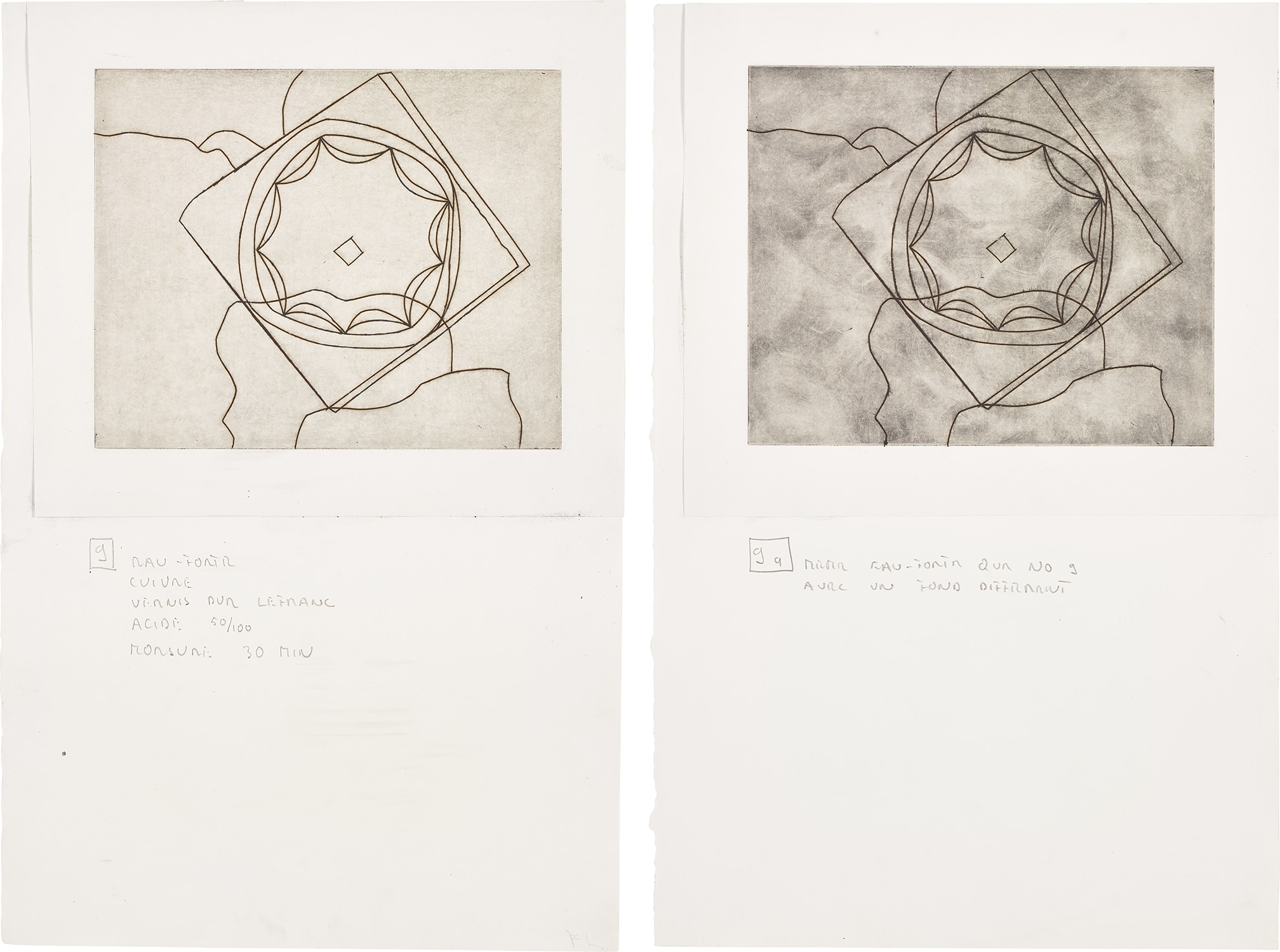



142
Ben Nicholson
Olympic Fragment; and Olympic Fragment (L. 28, C. 118; L. 29, C. 118)
1965
Two etchings, on wove paper, with full margins, mounted to paper supports.
both I. 20.2 x 24.8 cm (7 7/8 x 9 3/4 in.)
both S. approx. 27.4 x 31.4 cm (10 3/4 x 12 3/8 in.)
both supports approx. 50.4 x 33 cm (19 7/8 x 12 7/8 in.)
both S. approx. 27.4 x 31.4 cm (10 3/4 x 12 3/8 in.)
both supports approx. 50.4 x 33 cm (19 7/8 x 12 7/8 in.)
Two unsigned progress proofs aside from the edition of 50, one signed with initials in pencil by printer Francois Lafranca, each further inscribed ‘9’ and ‘9a’ respectively and annotated with printing observations in pencil on the supports, both framed.